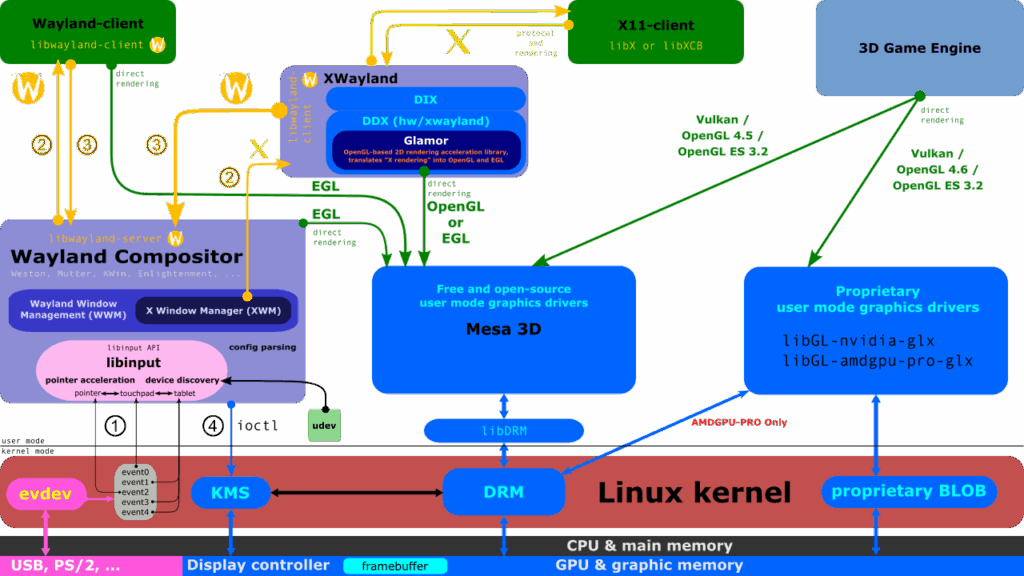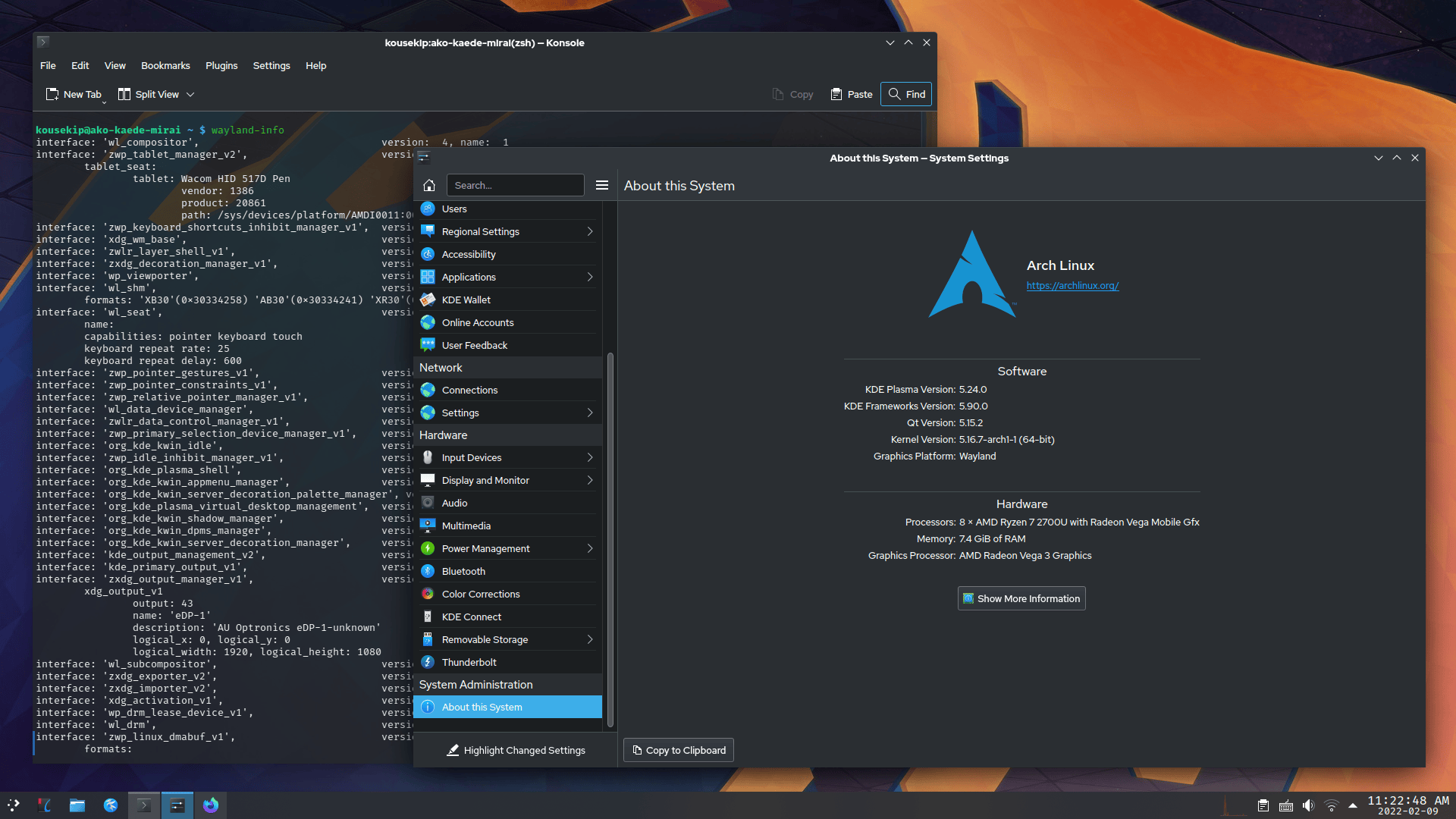For over a decade, Wayland has emerged as the natural successor to the veteran X Window System (X.Org), with a more modern, straightforward, and secure design philosophy. This shift in the paradigm of display servers in Linux systems is marking a significant change in the desktop graphical experience.
What is Wayland?
Wayland is a communication protocol that defines the interaction between a compositor (display server) and its clients (graphical applications). It not only defines the protocol but also provides a reference implementation called Weston. It was initiated by Kristian Høgsberg in 2008 and is currently maintained by freedesktop.org.
Wayland eliminates many of the legacy elements from the X system, transferring the rendering responsibility to client applications through modern APIs like OpenGL or Vulkan. This allows for a more efficient and direct architecture where the compositor simply mixes already rendered surfaces.
And what is X.Org?
X.Org is the most widely used implementation of the X11 protocol, created in the 1980s. It was designed with a focus on network transparency and portability, but its centralized and complex architecture has led to performance, security, and maintenance issues in the current context.
While extensions like XRandR, XRender, or Composite have kept X.Org relatively modern, its codebase still carries many historical limitations.
Comparison: Wayland vs X.Org
| Feature | Wayland | X.Org (X11) |
|---|---|---|
| Architecture | Client-server with compositor | Centralized server |
| Compositor | Integrated, mandatory | Optional, external (like Compiz) |
| Rendering | By the client (direct to buffer) | By the server or client |
| Network Transparency | Not native (requires separate solutions) | Designed to be networked |
| Security | Window isolation | No isolation by default |
| Input Support | libinput (unified and modern) | evdev, synaptics, etc. |
| Performance | Low latency, less overhead | Higher latency due to multiple layers |
| Compatibility | With Wayland and X11 applications (via XWayland) | With all X apps |
Advantages of Wayland
- Simplicity: Reduced architecture, without unnecessary legacy extensions.
- Security: Each window is isolated, preventing data leaks between apps.
- Low Consumption: Lower CPU and memory usage.
- Less Latency: With no intermediaries, the experience is smoother.
- Modularity: Facilitates innovation with new protocols and compositors.
Disadvantages or Challenges of Wayland
- Lack of support for legacy applications without XWayland.
- Limited network transparency, although solutions like VNC or RDP exist.
- Depends on graphic libraries: Does not include a rendering API.

XWayland: The Bridge Between Worlds
XWayland allows X11 applications to run on a Wayland environment. It functions as an embedded X server acting as a Wayland client, enabling unported software to continue functioning without changes.
Adoption in Linux Distributions
Many distributions already use Wayland by default in environments like GNOME or KDE Plasma:
- Fedora: A pioneer in using Wayland as the default since Fedora 25.
- Ubuntu: Enabled it since version 21.04 in GNOME.
- Debian: Uses Wayland by default in GNOME since version 10 (Buster).
- KDE Plasma 6: Uses Wayland by default since 2024.
Weston and wlroots
Weston is the reference implementation of a Wayland compositor, ideal for testing and embedded environments. On the other hand, wlroots offers a modular base for creating custom compositors, used in projects like Sway (tiling), Hyprland (dynamic with effects), and labwc (similar to Openbox).
Conclusion
Wayland is not just an evolution of X but a radical reimagining. Although it still coexists with X.Org thanks to tools like XWayland, its modern architecture, integrated security, and better performance position it as the undeniable future of the graphical environment in Linux.
For users and developers, understanding and adopting Wayland means taking a step toward cleaner, more efficient systems ready for the coming years of the Linux desktop.

